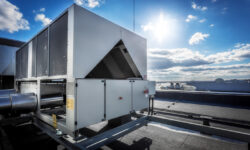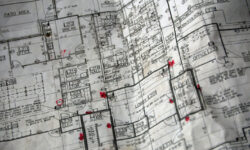Restaurants consume significantly more electricity than many other types of businesses. According to recent data, restaurants use about 38 kilowatt-hours (kWH) per square foot of enclosed space. The majority of energy use is linked to processes such as Heating water, Refrigeration, Cooking, or Cooling and heating the building. Having a higher-than-average utility bill comes with the territory of owning a restaurant. The good news is that there are ways that you can reduce your establishment’s electric consumption and your monthly utility bill. One of the best tactics involves upgrading to an efficient HVAC system. On that note, join us as we outline what is the most efficient HVAC system for restaurants. If your system is wasting energy or you are simply ready for an upgrade, this guide’s for you.
Read more →Your building’s HVAC system and its energy use represent a significant cost to your business. If your system wastes energy, that’s money down the drain. The International Energy Agency says that AC alone accounts for 20% of electricity use in buildings today and that we need to improve that value in the future. There are many potential causes of energy inefficiency in HVAC systems. You can watch for these signs to determine whether your HVAC system is wasting energy and take action to improve it.
Read more →Keeping your commercial HVAC system in working order provides a wide range of benefits. The Department of Energy highlights the need for a proper HVAC system to conserve energy and ensure air quality. You can watch for these signs to tell when you’re dealing with a failing HVAC system.
Read more →Clear instructions eliminate mistakes. When purchasing products that require assembly, you benefit from manufacturers that include directions. They outline the order of operations, what tools you’ll need, and show what the finished product should look like. HVAC diagrams are no different. Building blueprints are necessary for contractors performing renovations, and wiring schematics tell electricians where their wires run. You need accurate HVAC diagrams for the proper design and maintenance of your HVAC systems.
Read more →When the Maryland summer starts, heat and humidity should be at the forefront of a building manager’s mind. Managers will often consider the heat but underestimate the humidity. Even without high temperatures, moisture-rich air can negatively affect the workplace. Humidity can cause workers to feel tired and make it hard to breathe, quickly weakening morale. How do offices end up with high humidity?
Read more →The best way to avoid HVAC building maintenance problems is to schedule a seasonal inspection and tune-up. This type of routine service will help keep your commercial system running efficiently all year round. It will also give the HVAC technician an opportunity to identify problems earlier, which will make it easier to conduct repairs. It’s also important to keep aware of developing problems. Here are a few common commercial HVAC issues to look for throughout the year.
Read more →As a commercial HVAC contractor, we focus solely on servicing the heating and cooling systems for businesses and industrial businesses. This allows us to ensure each of our technicians has the specialized experience and skills necessary to work with larger cooling systems. Read on to discover some of the reasons we focus on commercial HVAC equipment.
Read more →Your heating and cooling system may not be the most glamorous part of your building, but when it stops working, it’s definitely the most important! Annual air conditioner maintenance can ensure that you don’t have big, expensive emergency repairs when the temperatures soar. There are four key reasons you should never skip your commercial annual air conditioner maintenance.
Read more →When your property’s heating or cooling system breaks down, you’ll need a reliable HVAC contractor to fix the issue immediately. HVAC failures and inefficiencies can be detrimental to your commercial property. For example, an AC breakdown during a hot summer day means that your tenants will face uncomfortable temperatures. Furthermore, energy inefficiencies in your HVAC system mean that your monthly utility bills will be higher than usual. Fortunately, many trustworthy HVAC contractors are available around the clock to find the source problem in your HVAC system and offer the best solution. However, not every local HVAC team will provide quality services. Given this concern, let’s discuss how to find the best HVAC experts for your commercial property.
Read more →Buying a new commercial HVAC system is one of the most important purchases you can make for your business. It’s your responsibility to choose an HVAC system that provides seamless comfort for clients, customers, and employees. However, choosing the right commercial HVAC system can be overwhelming with the number of choices to pick from. For this reason, you must understand what factors to consider when looking for a new HVAC system.
Read more →









